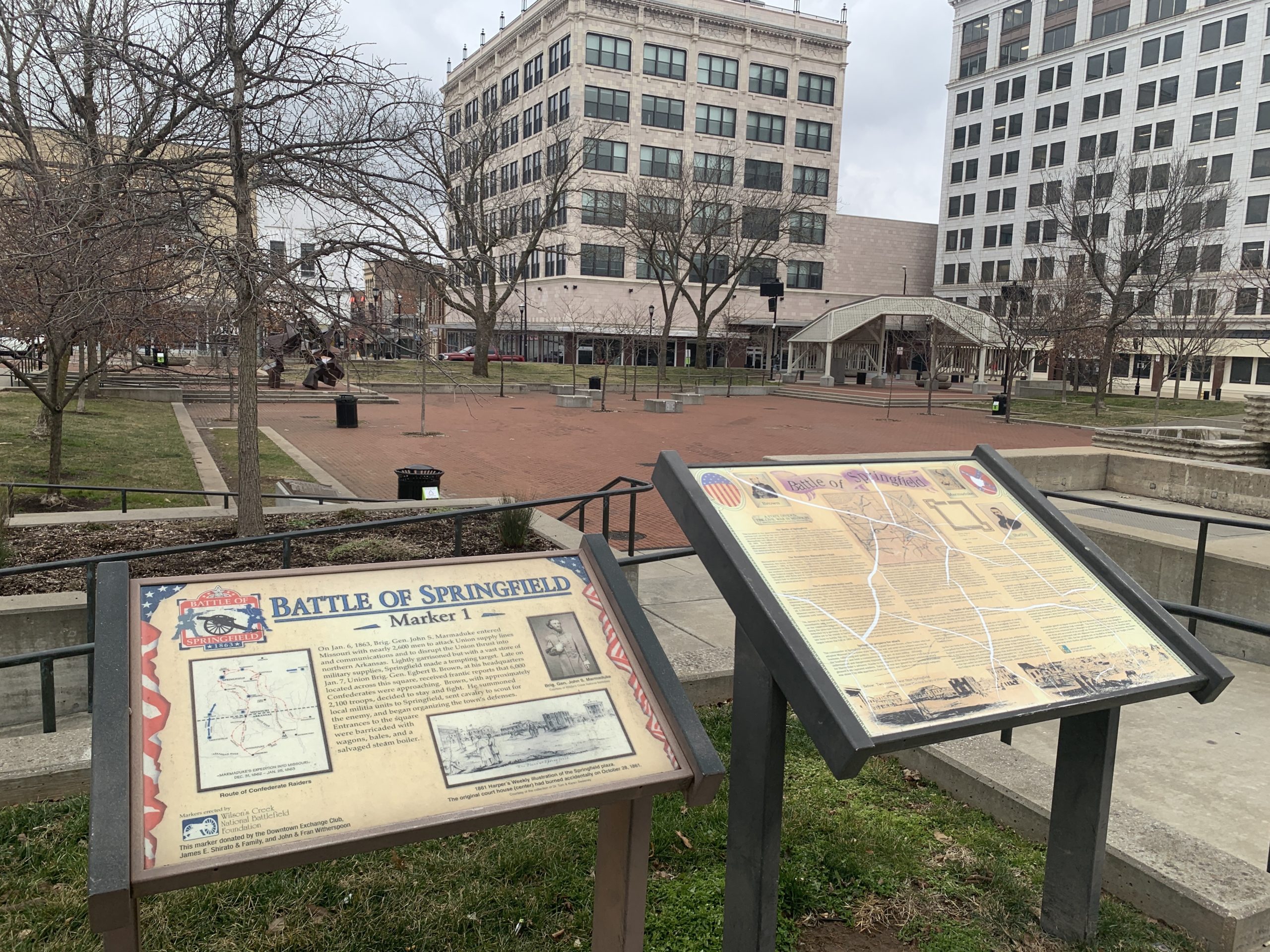
Remembering the Quinine Brigade and the Battle of Springfield
January 08, 2021
“The maimed, the half-deaf and the blind all made their way to the public square to aid in the defense of Springfield.” — Mills T. Chastain
They must have been quite a sight as they marched toward what we now call Park Central Square. The date was Jan. 8, 1863, the Battle of Springfield. Ragged as they were, the Quinine Brigade played a role in defending the Queen City.
Historical markers for the Battle of Springfield are scattered throughout Downtown Springfield. You can learn more about the battle by reading those plaques. Today, though, we remember that Quinine Brigade.
Marmaduke’s charge
Confederate Brigadier General John S. Marmaduke was leading his cavalry toward Springfield to attack the Union’s lightly-defended warehouses of military supplies. His forces numbered between 4,000 and 6,000. Defending the city were Brigadier General Egbert Brown and his forces, estimated to include only 1,343 veteran soldiers.
Brown knew he needed help. General Colley B. Holland, the Fourth Military District’s commanding general, sent dispatches to the surrounding communities, calling the Enrolled Missouri Militia to active duty. Their order? To race to Springfield.
Brown summons help
Meanwhile, the Union scoured for any and all men who were willing and able to shoot a gun. And Surgeon Samuel Melcher recruited 400 sick and convalescing soldiers from the city’s military hospital. Those men, strong enough to walk and carry a musket, formed eight companies. They were distributed among the forts and the public squares. These companies became known as the Quinine Brigade, from the medicine many had taken while hospitalized.
The Battle of Springfield raged for five hours. Brown ordered the burning of 10 houses along South Avenue. That provided an unobstructed view for the Union artillery inside Fort No. 4, which sat on the east side of South Avenue, between Elm and Cherry Streets.
The Quinine Brigade joins the battle
Mills T. Chastain ordered a company of the Quinine Brigade to defend the public square. The men packed themselves into the upstairs of the buildings on the north side. Brown needed more men to contain the Confederate advance. He ordered the Quinine Brigade to join a coordinated counter-attack. That attack helped save the Union center.
The Confederates pressed the attack, leading to hand-to-hand fighting and the capture of a cannon. Union troops on the west flank were pushed back to College Street, but their reinforcements halted the Confederate drive and even pushed back the Confederates to the vicinity of State Street.
The Union holds strong
As the sun started to set, Marmaduke launched a final assault against Fort No. 4. The Union repelled that attack as well, forcing the Confederates to withdraw down the Ozark Road to the Phelps Farm, the current site of Phelps Grove Park. The Battle of Springfield was over and the Union’s supply depot was safe.
A New York Times report published Jan. 12, 1863, reported:
“The scenes in Springfield among the women and children were interesting. Our Secessionists were delighted in the morning; at night, crestfallen. Several loyal families were reft of all property by the conflagration of their houses. Dwelling-houses in all parts of the city were pierced with shot and shell. In several houses shell had exploded. One exploded in a room where there were four women and two children lying upon the floor, covered with feather-beds. Windows were shattered by bullets, fences were torn down and destroyed; in many places the ground was soaked with blood. Ruin and desolation were everywhere. But our victory compensates for all, for by that victory we have saved the Army of the Frontier.”
Want to learn more about the Battle of Springfield and the Civil War? Head Downtown and find the 12 historical markers in our neighborhood, including one on the southeast side of Park Central Square. You can also visit the incredible History Museum on the Square. More information can is at www.springfield1863.org.